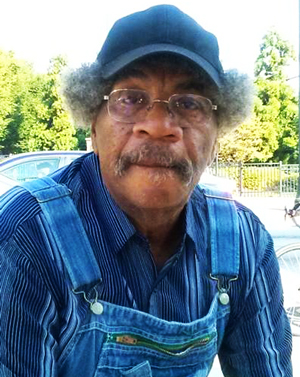Here is one of the Davids of this movement. His name is George. He died fighting for this righteous case. I think of him often and with much fondness. I met him in 2005.

Shoun Hill, professional photographer from New York City, and I have begun the documentary process that will culminate in our telling their stories via their faces, voices, and lived experiences. In conjunction with the Black Farmers and Agriculturalists Association, Tillery, North Carolina, our dream of telling their stories is finally being realized. We are indebted to Gary Grant for his support and leadership.
The details are lengthy and dreadful. Farming is hard enough work. Farming while black is even harder. Farming while black and attempting to work with programs and services of the USDA and the FSA has led down dark and foreboding paths for many, many African American farmers. See this article for a summary. Be on the lookout for "African American Land Acquisition and Dispossession: Reconstruction to the 21st Century" which will be published later this year in the American Journal of Sociology and Economics. It will attempt to describe the unbelievable yet believable obstacles that the formerly enslaved had to experience in order to become land owners as well as the obstacles encountered by those who wanted to sell land to African Americans. The window of 1890 to 1910 was a period of immense gains for land ownership. Thereafter, black land ownership began to decline. Small farmers lost their land at precipitous rates, but black farmers lost their even faster.
The documentary, then, will tell the stories of blatant racism at the hands of the USDA. It will tell stories of freedom fighters who advocated for them both in and out of court. It will chronicle the immense pain and suffering that these unknown heroes had to experience as they attempted to hold on to their land.
Shoun and I have begun the filming process with a three-hour conversation with the former lead counsel. The details he provided were chilling and revealing.
While this is a two-year journey, I hope to share details and stories along the way with you. I have been moved by their stories, and I think you will be as well.
The Davids went up against Goliath. With a large number of smooth stones and rough stones, they prevailed via administrative procedures. Some died before they were granted justice. Some died shortly thereafter. Some still live. Some lost their farms. Some still own their farms.
The stories are rich and compelling. They are heart-rending stories of struggle and resilience.